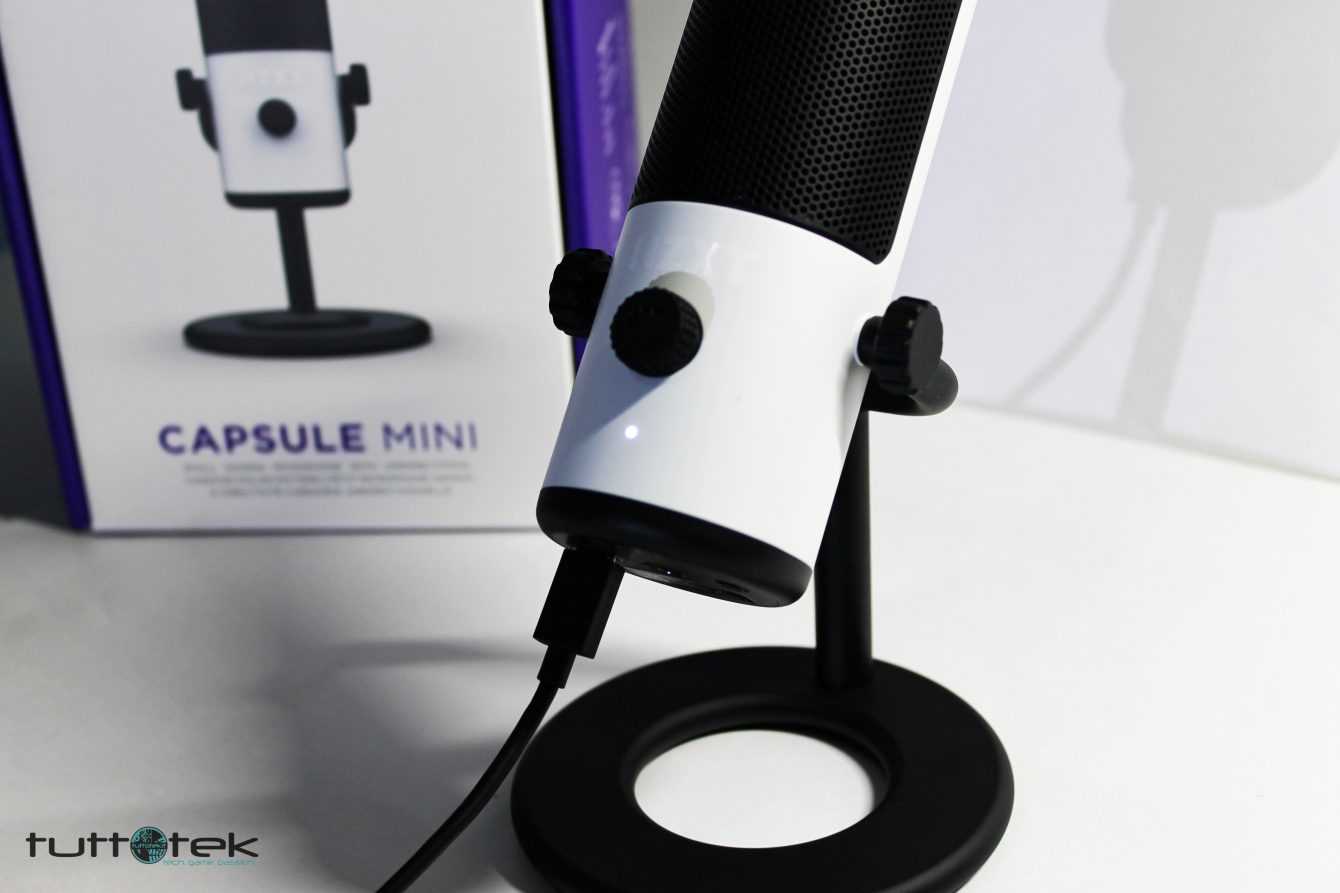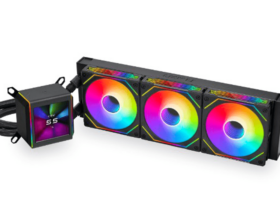NZXT Capsule Mini Review. Today we will find out everything about the heir to the famous NZXT microphone
The NZXT Capsule microphone, which arrived on the market in October 2021, has generated significant interest from consumers. Children of a pandemic still in full development and of the Smart Working which as master “forced” many users to create a professional environment even at home, the Capsule was able to perfectly fulfill this Mission.
The NZXT Capsule Mini has the same goal, but with the intention of bringing to the market a solution that is cheaper than its older brother, and above all more compact so as to better adapt to different office organizational situations. Let’s not get lost in chat anymore and let’s get to the heart of the review with this new Capsule Mini from NZXT.
Umboxing and build quality | NZXT Capsule Mini Review
This new microphone does not come alone, in fact it will be supplied with the Boom Arm Mini, it is an arm, the latter is able to provide a wide range of movement to find the right position for each of you.
But let’s go in order, NZXT has created a well-finished and well-crafted packaging. With minimal attention to detail.
The Capsule Mini is made with the alternation of the following materials: plastic, rubber and aluminium. The result is a very balanced product, and well balanced from an aesthetic point of view (typical of NZXT) with a very high perceived quality. It gives excellent feedback to the touch and the entire area of interaction given by keys and knobs is intuitive.
The base, made of solid aluminum with a rubberized support base, is very heavy, gives a solid balance to the microphone, and allows you to move it frontally as you please. Obviously you can remove the latter to use it manually.
We continue the review of this NZXT Capsule Mini by talking about its “arm”, or Boom Arm Mini. Made of aluminum as regards the elements of the arm, while we find instead plastic for inserts and joints. A plastic of slightly lower quality than that present on the microphone and which has no particular processing. Overall it is a good product, solid and effective as we will see later. In addition, there are two inserts on the arm, these slots which will then be closed with their own caps, will serve to hide the cables for optimal wiring.
Finally, both components have, as per the typical style of the brand, “matte” (opaque) colors. Which give a unique look to the product, making them highly recognizable. Excellent move in terms of brand recognition.
Fitting and performance | NZXT Capsule Mini Review
Arm assembly is intuitive and simple. Difficult to be wrong as the presence of thread on one side forces us to screw it only and exclusively to the microphone itself. Assembling the arm is as simple as fixing the base at the same time, which, once the clamp is inserted, we will only have to find our ideal position.
The arm moves back and forth, pity not laterally with rotations, for someone it could represent a “minus”. Overall, the solidity is certainly present, the screwing and locking part are very good. The only drawback that I would like to point out are the fixed tightening screws present at the level of the hinges, even once tightened to the maximum, they maintain a slight play, they do not completely fix the microphone and the chosen position of the arm, of course, not I mean that it “gives” when falling, but that after a long period the arm will lose its position by a few millimeters, or that if moved it loses its position.
The fixing base with clamp has a rubber pad to avoid damaging the surface on which it will be installed, a pity however that it is not present at the same time in the internal part of the clamp, the latter also comes into contact with the surface, but it is discovery. Instead, the threaded screw once it reaches maximum tightening marks the surface too much, perhaps a better solution had to be found from this point of view, or perhaps a more concave and perhaps rubberized ring was enough.
A little recap on the specs
On the front of the microphone we find a thin perforated grille obtained from the processing of plastic. On the front, a small knob will allow us to adjust the general volume of the device, we mean the Output volume (speaker output), while the same is also a key, in fact if pressed, the microphone is deactivated from all the outputs of the machine. The key itself includes an indication LED, and will be green when active, red when not. Below we have the inputs for the connection, Type C (with integrated cable in the package), a hole for attaching the pin to the arm, and a jack input.
We can conveniently connect an audio jack cable to the Microphone, in this way to hear the audio output (reproduced by the device) through it, and also our voice. It is neither invasive nor disturbing, on the contrary, the sound is very delicate and light, this allows us to have real-time feedback on the quality of our voice, and how the interlocutor will hear us.
The analog-to-digital resolution conversion is 24-bit/48kHz, average, but the rendering is optimal in practical terms. The Frequency Response is instead equal to 100Hz – 10kHz, for a THD of 0.23% (1kHz). Not bad for its price range. All this turns into a really good quality, in the tests conducted the interlocutor has always received an excellent sound, with clean voices. The same, from the recording tests carried out. It cuts down noise quite well. Instead, they remain present even if slightly suppressed if the latter are above 110/120 dB. The test involved the emission of simulated sounds, but specifically at close range. For measurements we have 3.9″ x 7.3″ x 3.9″.
How does it behave?
In practical terms, in the operational field it performs quite well. Being Plug and Play it does not require specific installations, just connect it to the device and it will work properly, as it already has read-only drivers on the motherboard and will be immediately detected by the device. Just select it – according to the specific software – from the related settings.
The NZXT Capsule Mini performs remarkably well during recording, nothing to blame for it. The recorded track is clean, hiss and background noises are eliminated and this turns into a respectable quality level, certainly higher than what the classic integrated microphones of Webcams or Laptops possess.
At the moment being Plug and Play, it is universally recognized so with any software you can use it for further settings, or you can just base yourself on the PC settings. But, NZXT lets us know that dedicated software will soon arrive for the management of various parameters. Below is a preview screen of the same.
Who should buy NZXT Capsule Mini?
Having reached the conclusion of the review with this Capsule Mini from NZXT, we just have to draw conclusions. We would like to recommend it overall as it represents an excellent choice for those who want to increase the quality of their Calls, or why not, also to improve the performance of their streaming. With a cost that is around $69.99 dollars. The same price for both the arm and the microphone, for a total of approximately $140. A little high in terms of price, but looking at the competition, medium and medium/high range solutions cost over one hundred dollars for just one microphone.
Some moles of the product were pointed out during the review, on the microphone side nothing to be attributed, but we found the inconsistencies on the arm. Problems that can be solved, but which are worth reporting. Perhaps we will have appreciated a lower cost precisely as regards the arm.
Plus points
- Microphone design and quality
- Performance
- Background noise reduction
- Ease of use (Plug and Play)
Points against
- Cost of the Boom Arm Mini
- Some construction flaws
















Leave a Reply
View Comments